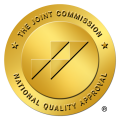How Nurse Practitioners Help Addiction Treatment Services
What is a Nurse Practitioner?
Nurse practitioners, also known as NPs, are an advanced form of nursing that requires further schooling and licensing. NP is considered above registered nurse and below doctor, although a masters is required. The Labor Bureau expects the field to add over 100,000 more jobs in a ten-year span.1
What Do NPs Do?
Nurse practitioners handle the day-to-day staffing and responsibilities for their floor or clinic. They diagnose patients, administer medication, and in some cases, act as a therapeutic influence. There is no end to responsibilities an NP may undertake in a busy environment.Nurse Practitioner vs. Doctor
Nurse practitioners, in most cases, have as much authority over a patient’s wellbeing and level of care as a doctor. In certain cases, it may even be better to see a nurse practitioner before seeing a doctor.
In a traditional environment, nurse practitioners and doctors work in tandem to provide patients with continuous coverage. However, the most significant reason to choose a nurse practitioner as opposed to a doctor is the level of care provided by NPs. As they are more hands-on, they can often better predict a patient’s needs and reactions to specific treatments.1
How To Become a Nurse Practitioner
- Get a BSN: A bachelor’s degree in nursing is mandatory for most nursing programs.
- Become Licensed: Becoming a licensed nurse requires an individual to pass the Authorization to Test(ATT) and the Council Licensure Examination. Once these exams are passed, a nurse can apply for a license.
- Complete a Graduate Program: Graduate programs teach advanced versions of the techniques gained during BSN studies.
- Become Certified: The final step is passing an exam then applying for a nurse practitioner license. NP’s will have to maintain their license with further training and refreshment courses over the years.
What Does Addiction Look Like?

Addiction can take many forms, but the underlying factor is a debilitating dependence on a substance or activity. A person can become addicted to almost anything, but alcohol and controlled substances have addictive properties that can intensify cravings.
Common Types of Addiction
The most common addictions are as follows.- Cigarettes: 34 million American’s experience nicotine addiction.
- Controlled Substances: Controlled substance dependency includes heroin, oxycodone, meth, etc., and impacts roughly 30 million people.
- Sex Addiction: Up to 30 million people in the US suffer from sex addiction.
- Alcohol: Approximately 20 million Americans experience alcohol addiction
How Addiction Can Impact One’s Life
Addiction progressively lowers the quality of life. It can cause extreme and persistent negative mental states, aggravate mental illnesses, and erode cognitive functions. Addiction can reduce the capabilities of physical functions like the immune system or filtering systems like the kidney or liver. Addiction also robs people of healthy relationships with family and friends. There’s no positive to addiction, and the quicker a person receives help, the better.
Common Addiction Treatment Services
There are several treatment methods to overcome addiction.
Detox
Detoxing allows a patient a safe medical space to overcome withdrawal symptoms. In detox, a patient will be under medical oversight to prevent further health complications.Inpatient Care
Inpatient care, often provided by rehab clinics, involves 24/7, long-term care options. Inpatient care is great for patients that need separation from a toxic environment or influence. Inpatient recovery also helps build a support system and emphasizes educating patients on the effects of drug use on the brain.
Outpatient Care
Outpatient care centers around consistent check-ups and medical monitoring while allowing a patient to live their day-to-day life. Outpatient recovery is geared towards people that are unwilling or unable to commit to inpatient treatment.
Therapies
Therapy creates positive coping mechanisms and provides a safe space to talk. Therapy can come in many forms, but the most common types are cognitive-behavioral therapy (CBT), trauma therapy, and exposure therapy. Therapy can be tailored to addiction, PTSD, and more.
How Can Nurse Practitioners Help in Addiction Treatment?
Nurse practitioners are generally considered more approachable than doctors. They typically have high levels of empathy and offer more personalized care. These traits go a long way in addiction treatment as many people in recovery experience shame and anxiety.3
Here are a few of the specific benefits of a nurse practitioner.
Medication-Assisted Treatment
Medication-assisted treatment, or MAT, is provided for patients who experience severe withdrawal effects. A nurse practitioner can administer medication as needed.
Aid in Rural Areas
Simply put, there are far more nurse practitioners than doctors. Moreover, considering their scope and expertise is comparable to doctors. NPs can cover far more ground like that of rural and isolated environments.4
Community-Based
NPs often have a greater tie to the community and, as such, may have a higher level of trust with the patient. Trust is crucial during the diagnostic stage because it can illuminate symptoms and underlying conditions.
Consistent Presence
Typically, nurse practitioners fill in when doctors are unavailable. Because the experience and knowledge are often comparable, a patient can receive doctor-esque oversight on a more regular basis. Doctors will often only be able to visit patients for a short time, and they rely entirely on the chart. NPs have an opportunity to build a relationship with the patient, which in turn reflects in everything they do.5




